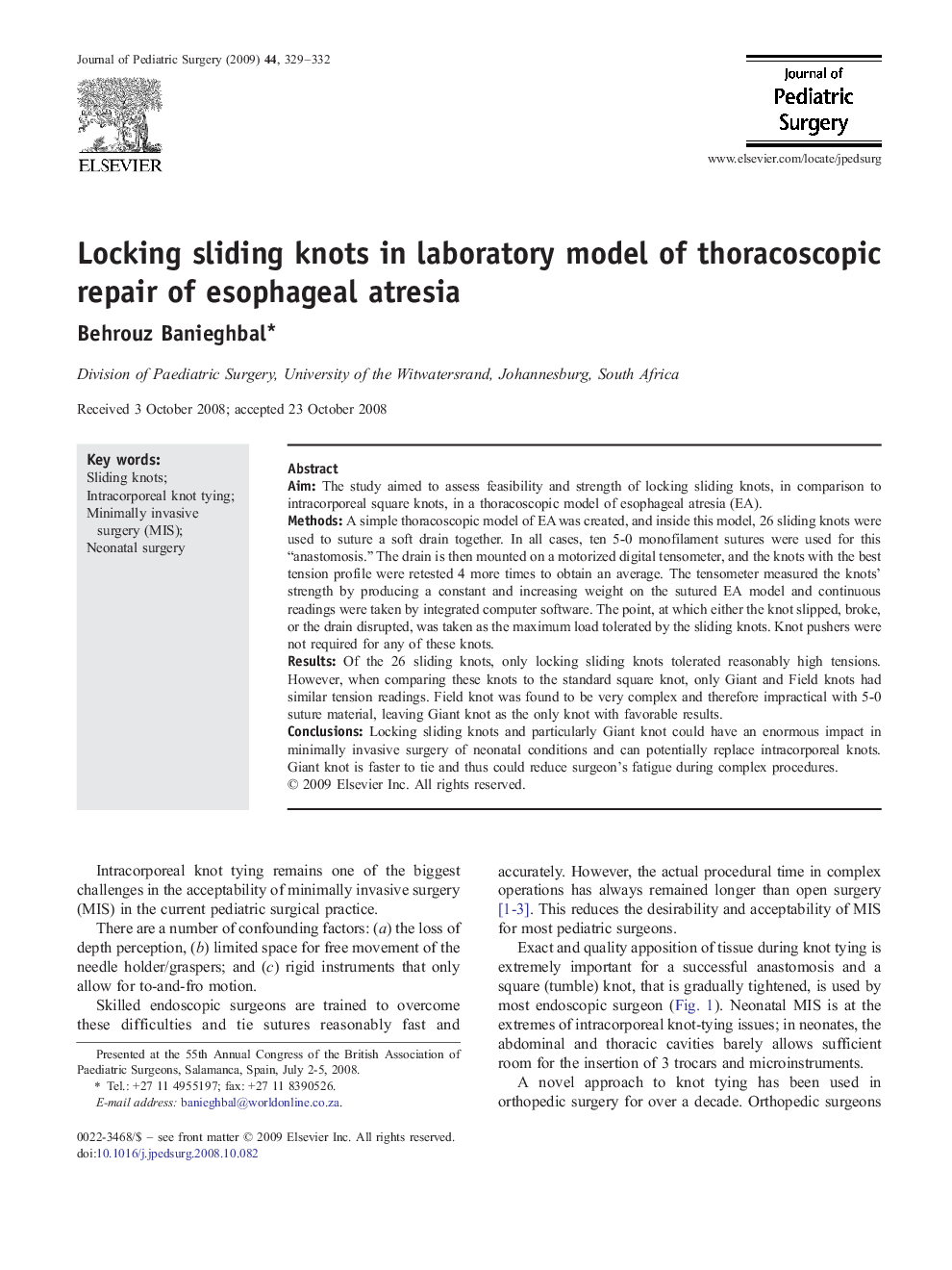| Article ID | Journal | Published Year | Pages | File Type |
|---|---|---|---|---|
| 4158619 | Journal of Pediatric Surgery | 2009 | 4 Pages |
AimThe study aimed to assess feasibility and strength of locking sliding knots, in comparison to intracorporeal square knots, in a thoracoscopic model of esophageal atresia (EA).MethodsA simple thoracoscopic model of EA was created, and inside this model, 26 sliding knots were used to suture a soft drain together. In all cases, ten 5-0 monofilament sutures were used for this “anastomosis.” The drain is then mounted on a motorized digital tensometer, and the knots with the best tension profile were retested 4 more times to obtain an average. The tensometer measured the knots' strength by producing a constant and increasing weight on the sutured EA model and continuous readings were taken by integrated computer software. The point, at which either the knot slipped, broke, or the drain disrupted, was taken as the maximum load tolerated by the sliding knots. Knot pushers were not required for any of these knots.ResultsOf the 26 sliding knots, only locking sliding knots tolerated reasonably high tensions. However, when comparing these knots to the standard square knot, only Giant and Field knots had similar tension readings. Field knot was found to be very complex and therefore impractical with 5-0 suture material, leaving Giant knot as the only knot with favorable results.ConclusionsLocking sliding knots and particularly Giant knot could have an enormous impact in minimally invasive surgery of neonatal conditions and can potentially replace intracorporeal knots. Giant knot is faster to tie and thus could reduce surgeon's fatigue during complex procedures.
